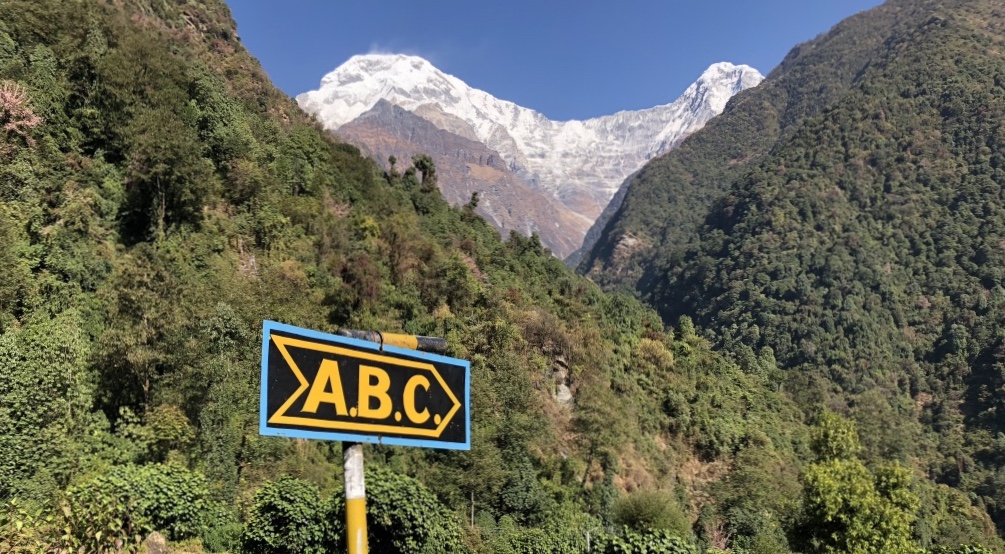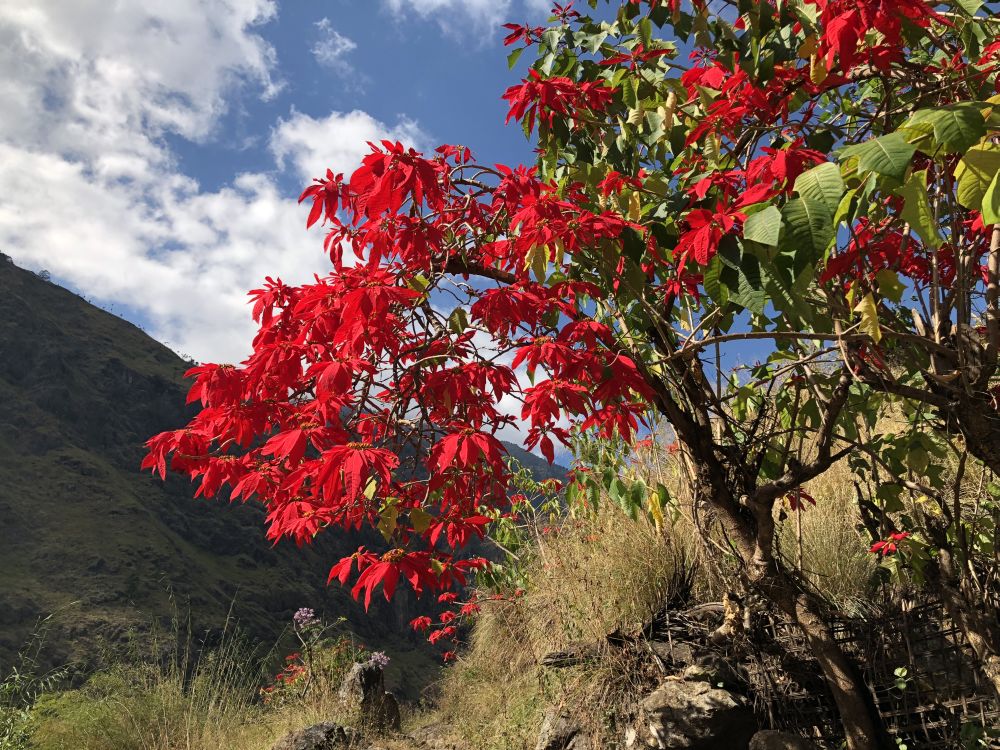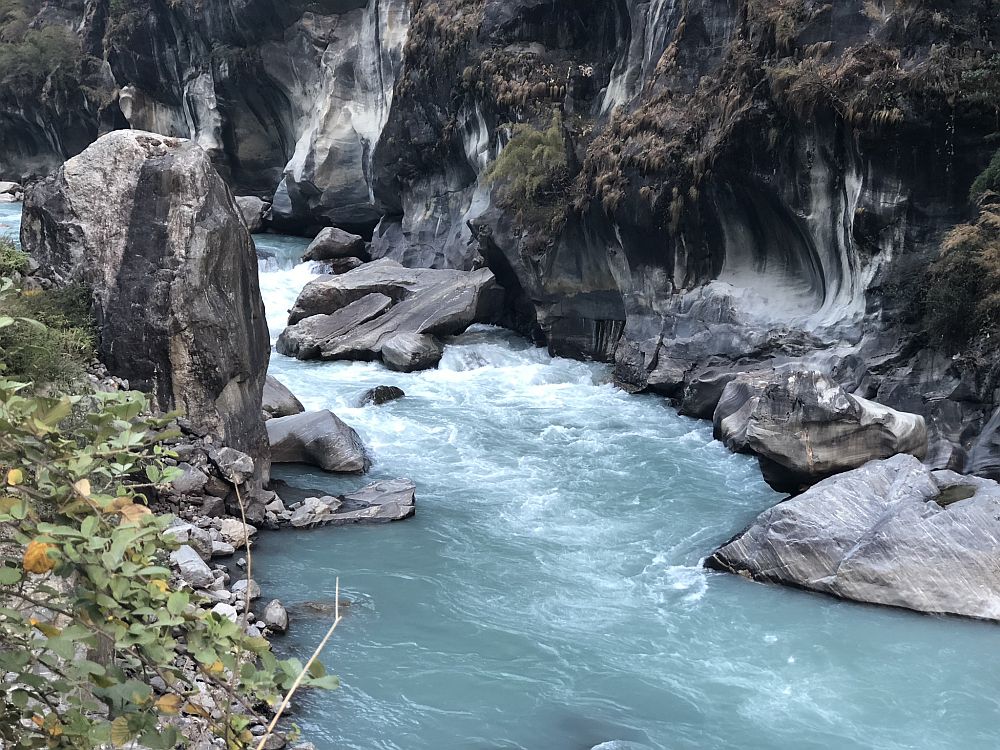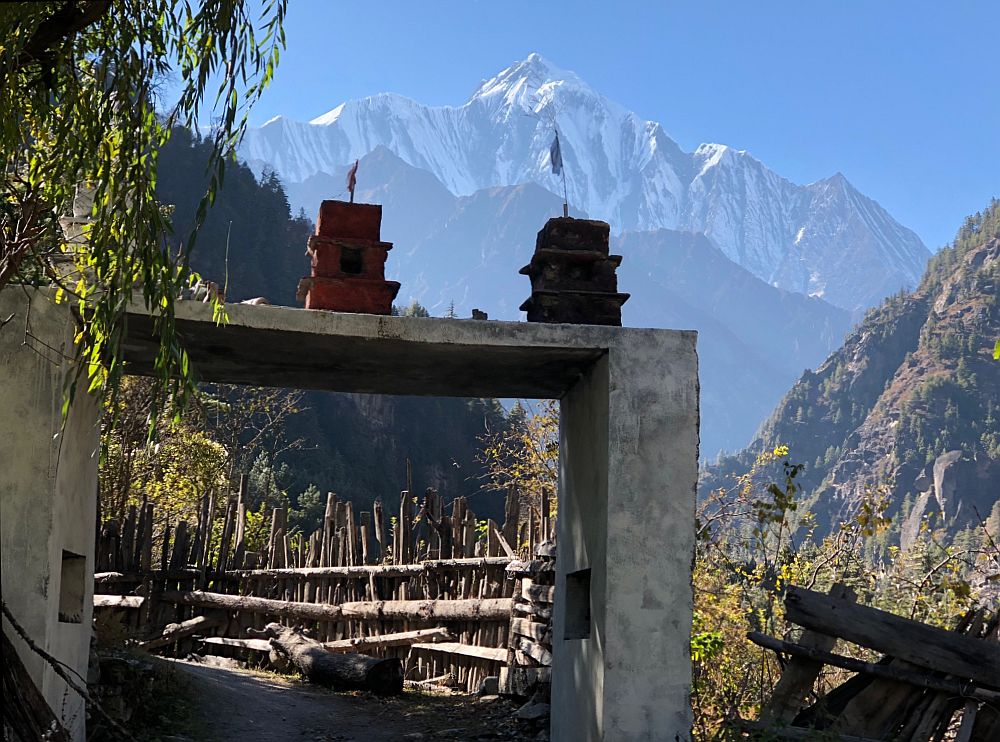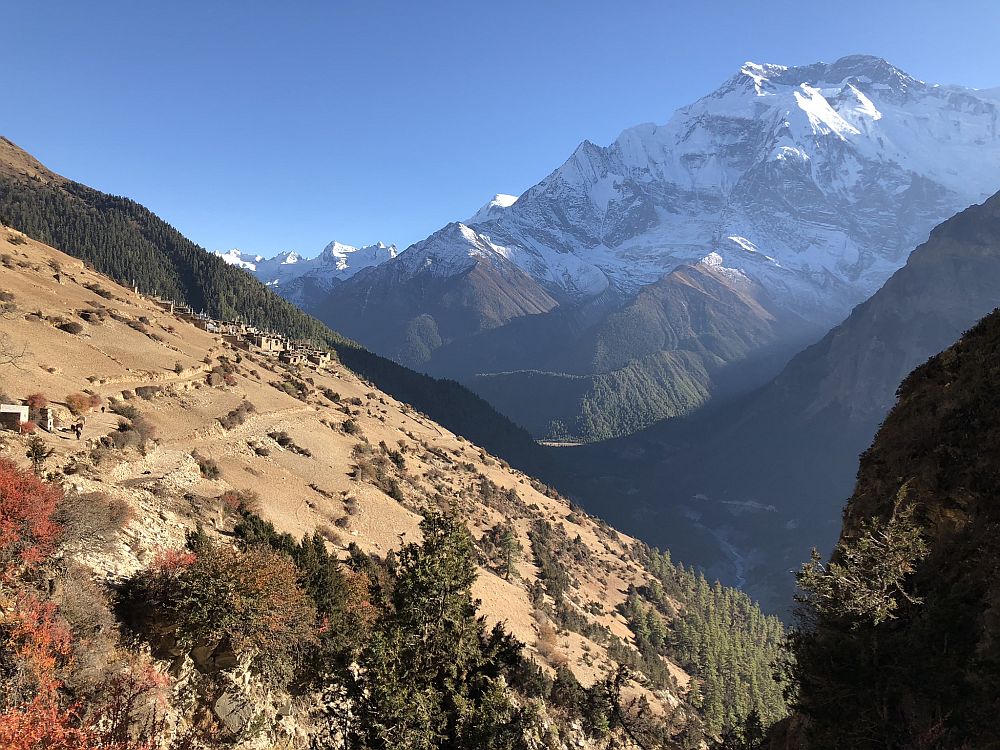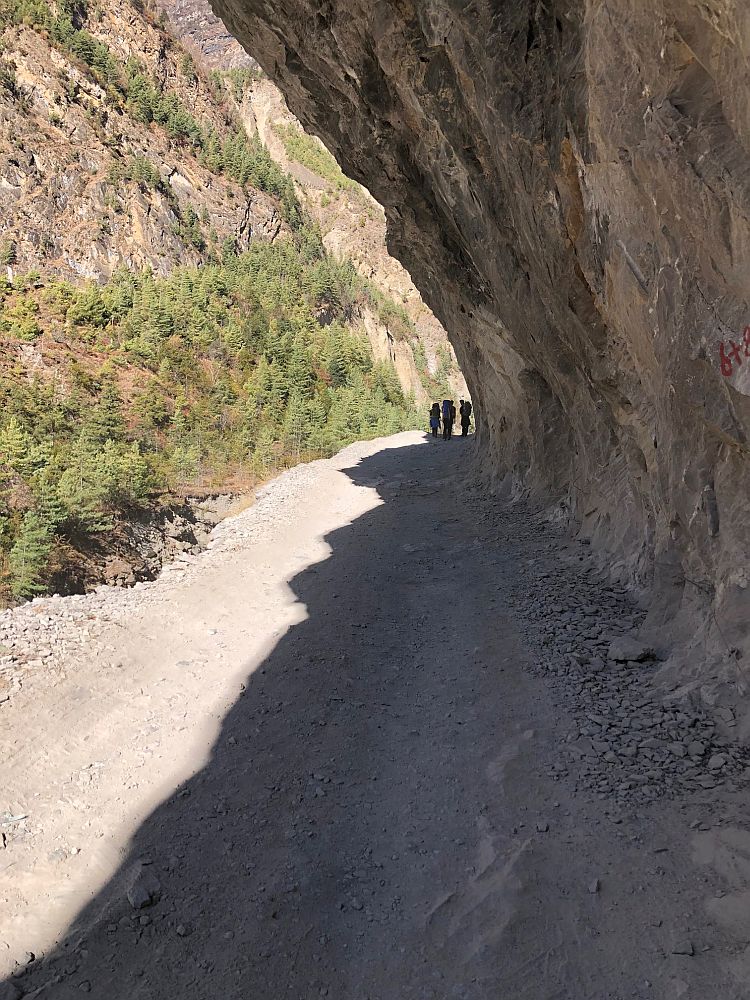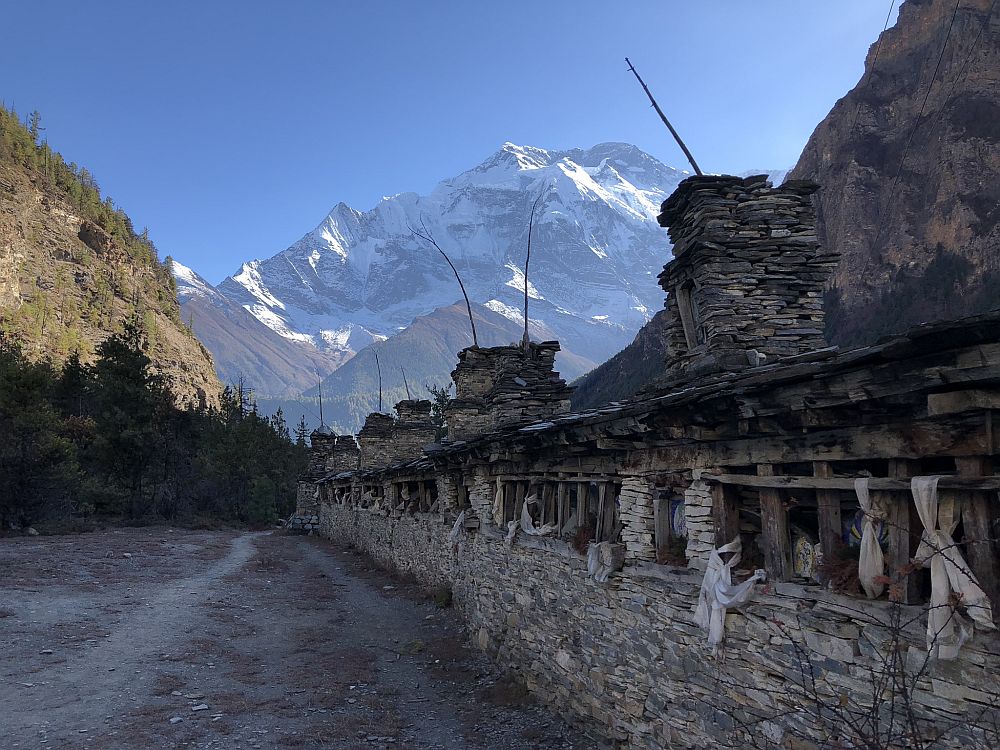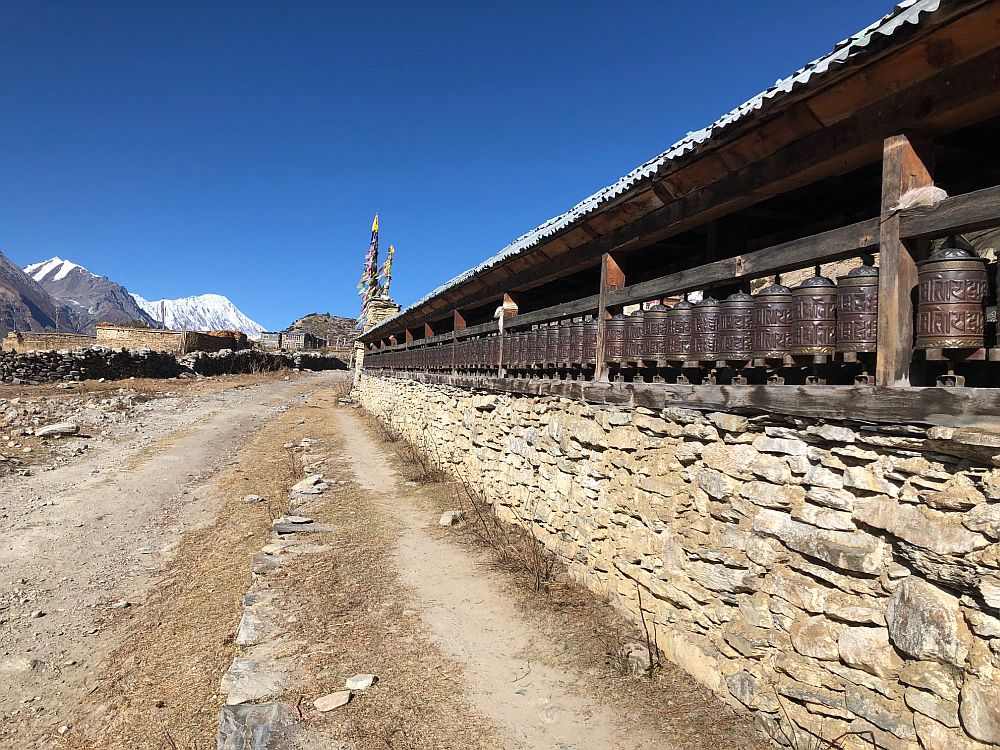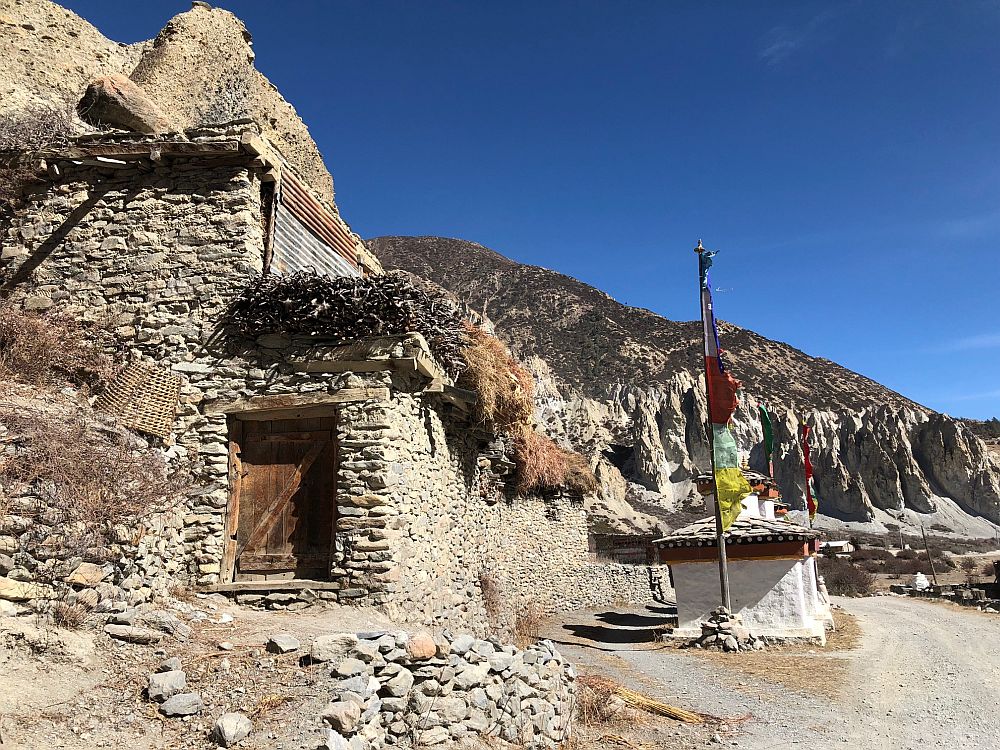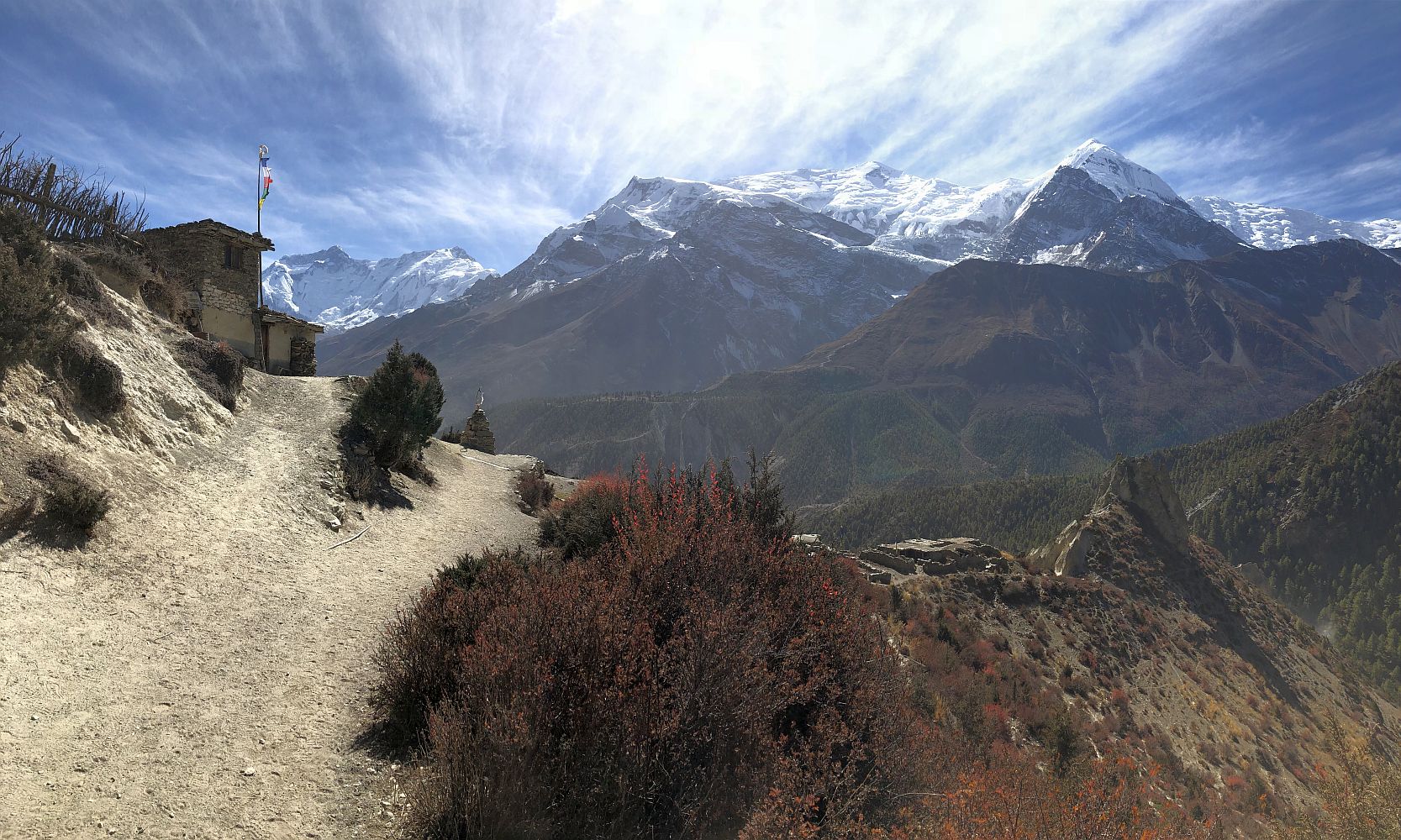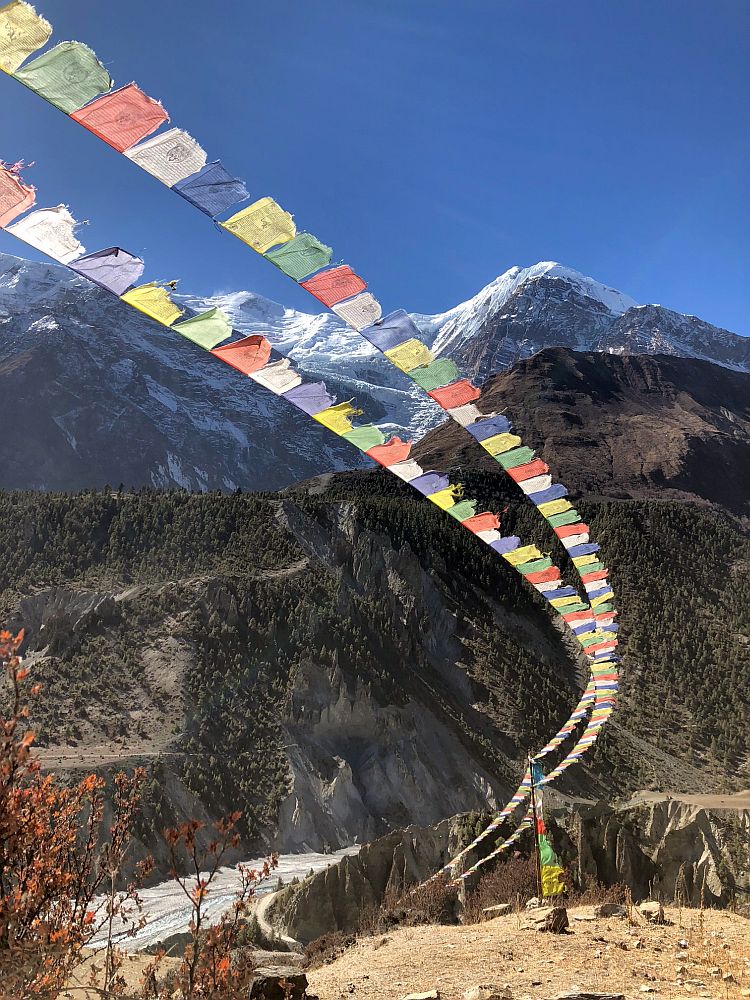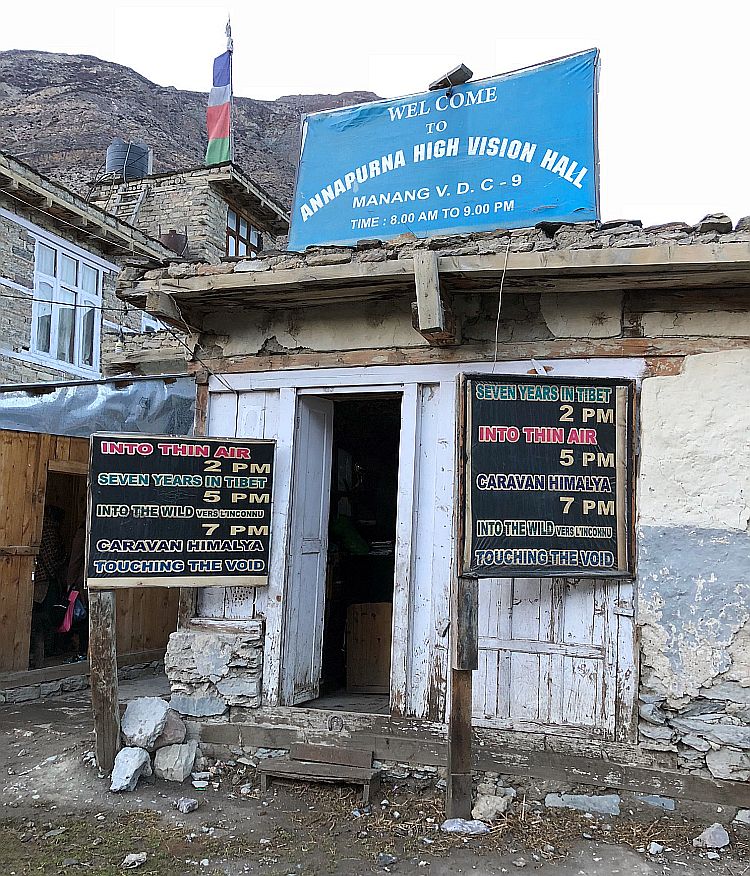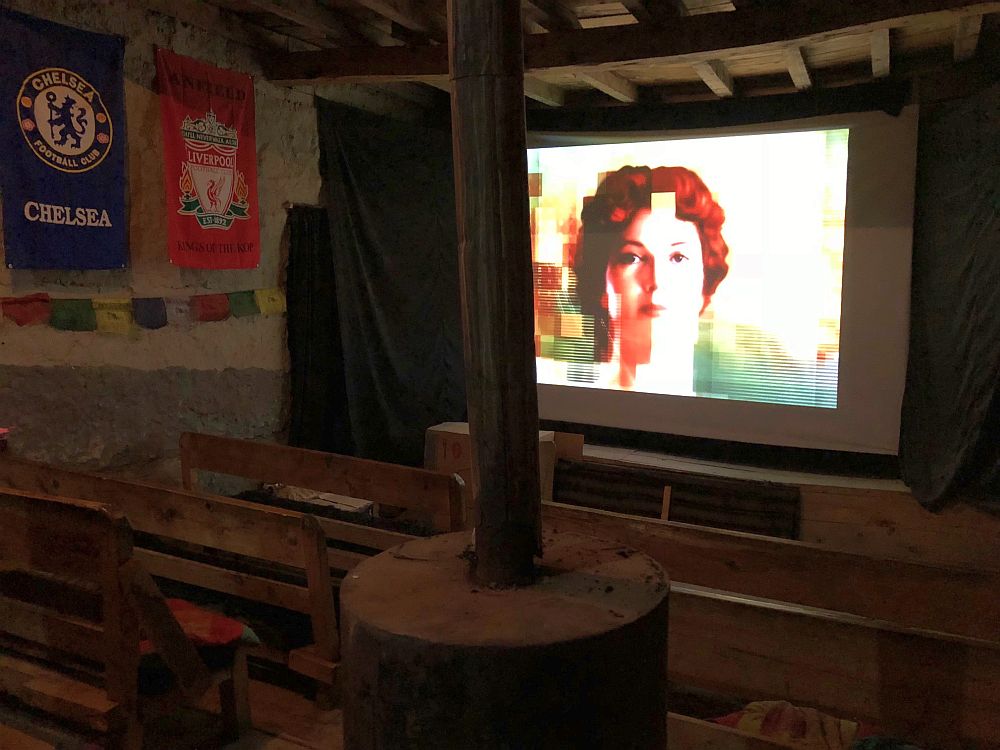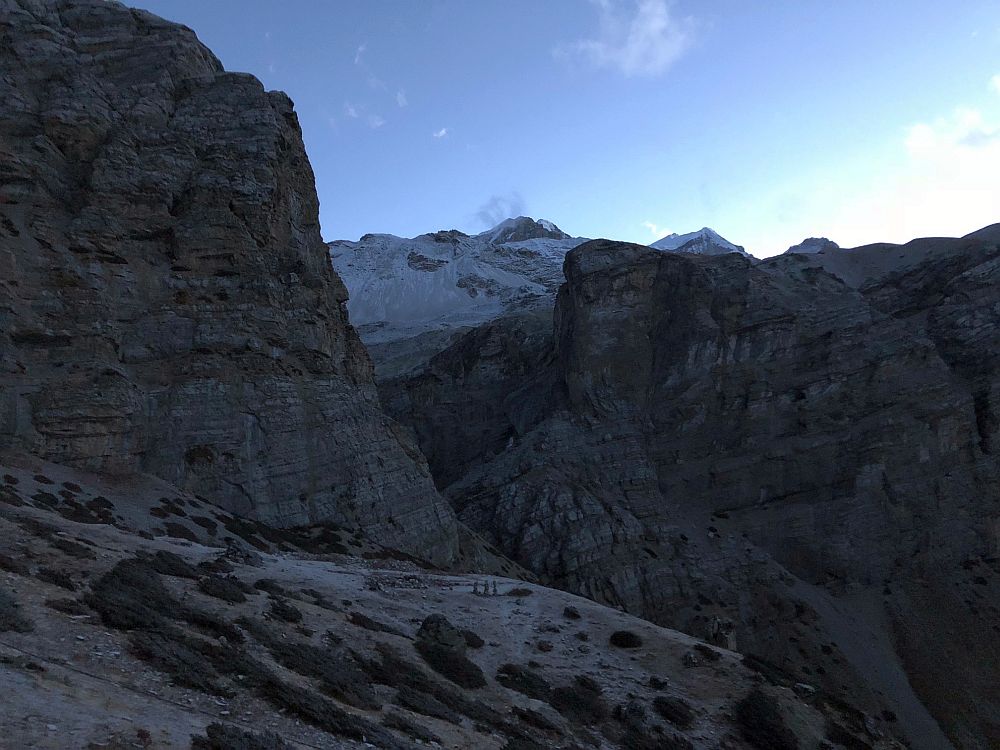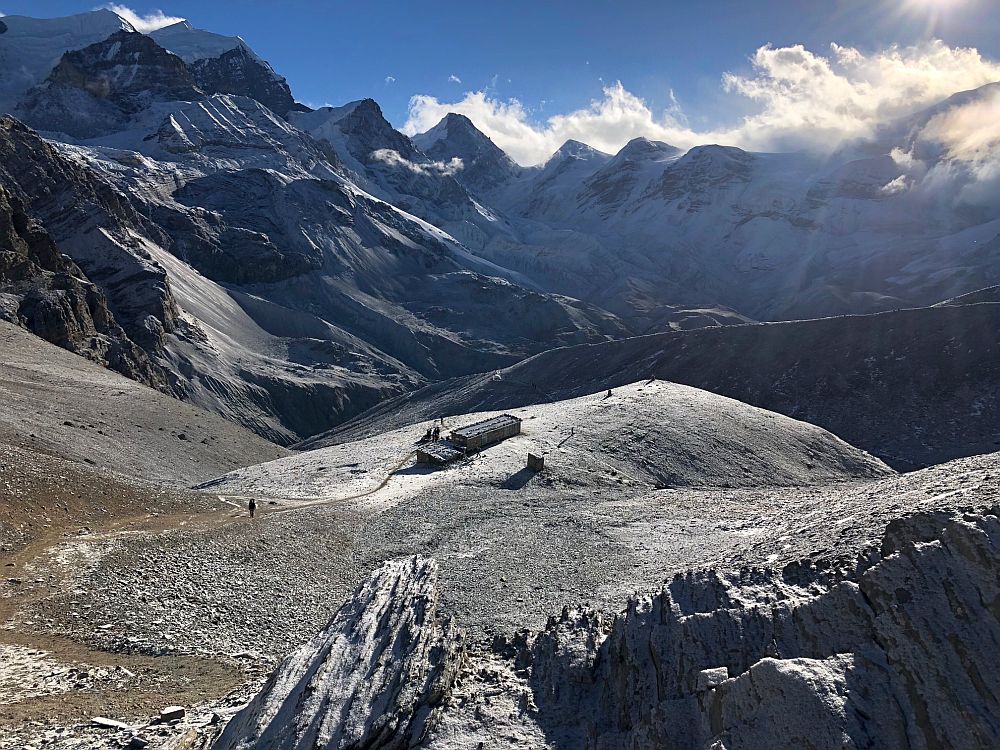Nepal Trek 4: Annapurna Base Camp
Way back in my first week of trekking, Adam the Australian knew I was heading to the Annapurnas eventually and repeatedly described how much he liked the Annapurna Base Camp trek, his voice turning soft and wistful at the memory. On his recommendation, I was able to arrange my last week in this region to fit in a fast trek up to "ABC."
ABC is a straightforward out-and-back trek with a half-dozen settlements along the way, starting at an elevation of 324 meters/1,070 feet, and topping out at base camp at 4,100 meters/13,550 feet. Guide books recommend 10 days; I did it in five, and I met a elderly Swiss man who ran it in three days! (He's lived in Nepal on and off his entire adult life and this was his twenty-fifth time trekking ABC.)
Mood
I recognized even at the time that I was on autopilot. I had been trekking in the mountains for five weeks at this point, and this would be the easiest and shortest hike I'd do since starting out. I liked the rhythm of waking up early, walking all day, eating dal bhat in the evening and falling sleep early. But my appreciation for my surroundings was getting crowded out by a compulsion to walk as fast and far as I could every day. My fitness and acclimatization made this very, very easy to do, even while I made a feeble effort at asking myself, what's the hurry?
ABC draws a lot of first-time hikers who are looking for great views without the punishment of high, high altitude. By contrast, I was ripping down the trail at a pace that made the guides and porters look at me funny.
Day 1:
I took a jumpy, uncomfortable bus ride from Tatopani sandwiched in the back seat with five teenage boys who shared their oranges with me, arriving in Naya Pul in the afternoon. I got a Jeep ride into the Annapurna Sanctuary, up to the end of the road and the start of the trail and hiked a few hours to New Bridge. (Truly, the new metal suspension bridge is so much nicer and way more secure than the old wooden plank bridge.)
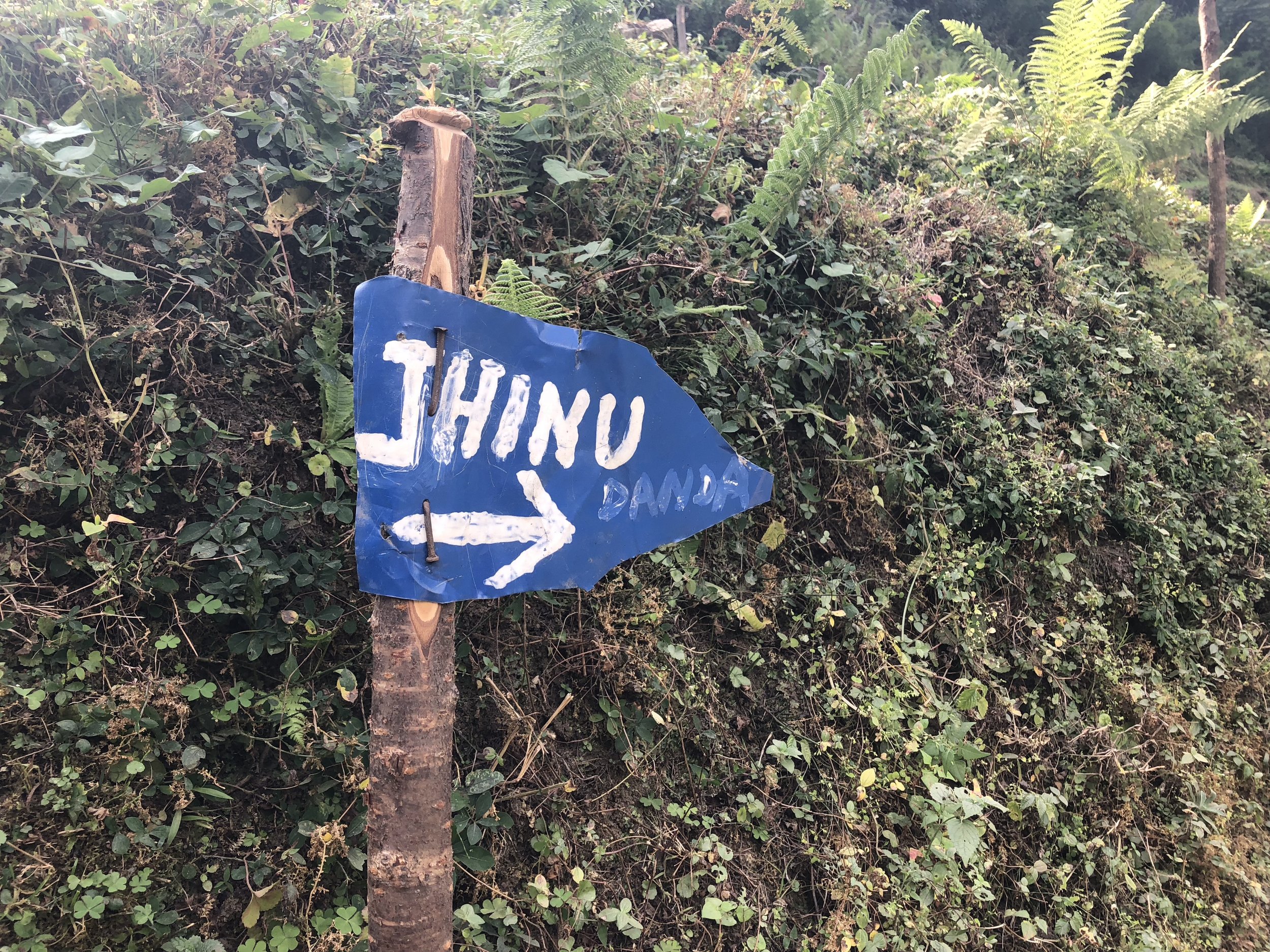
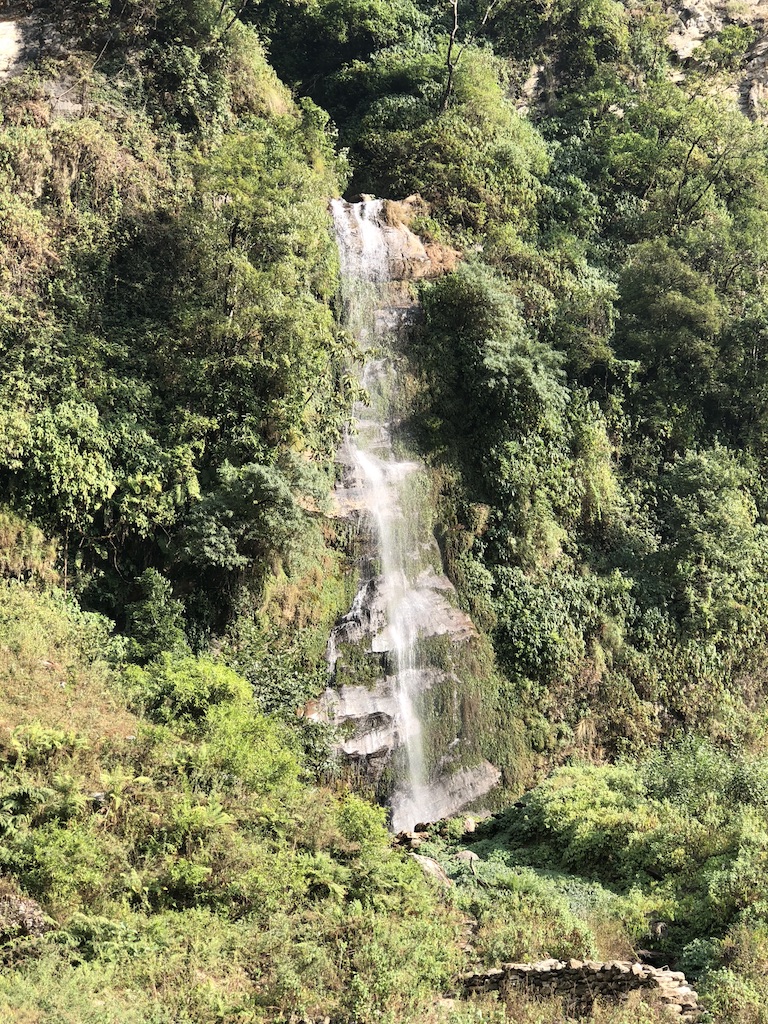
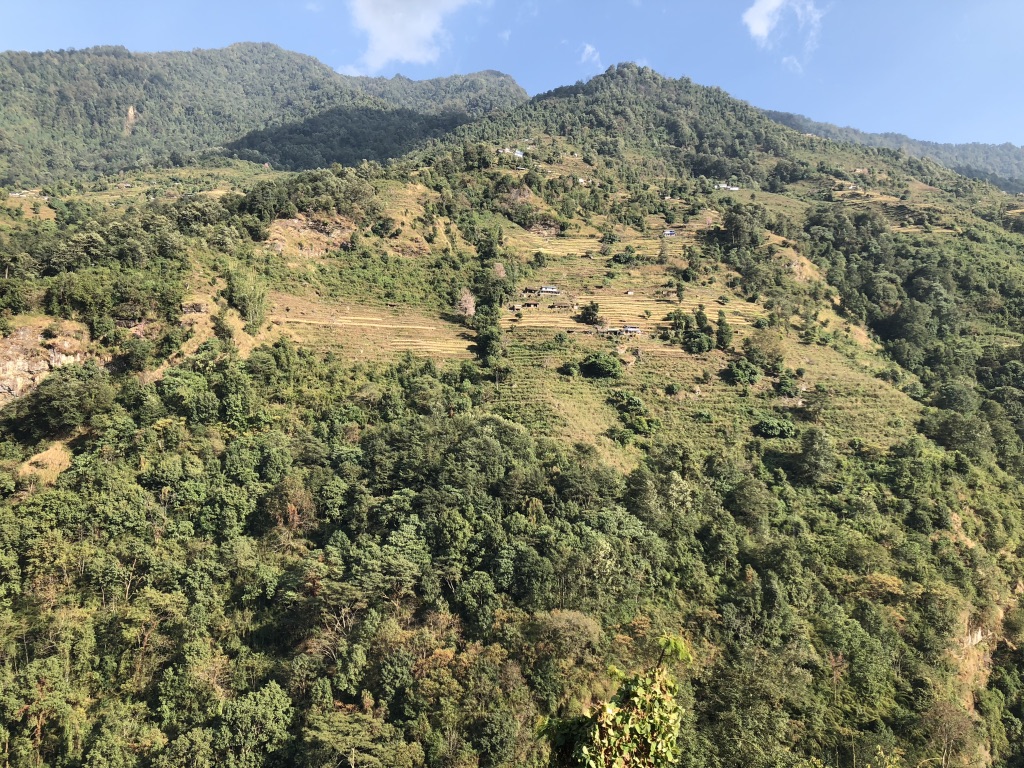
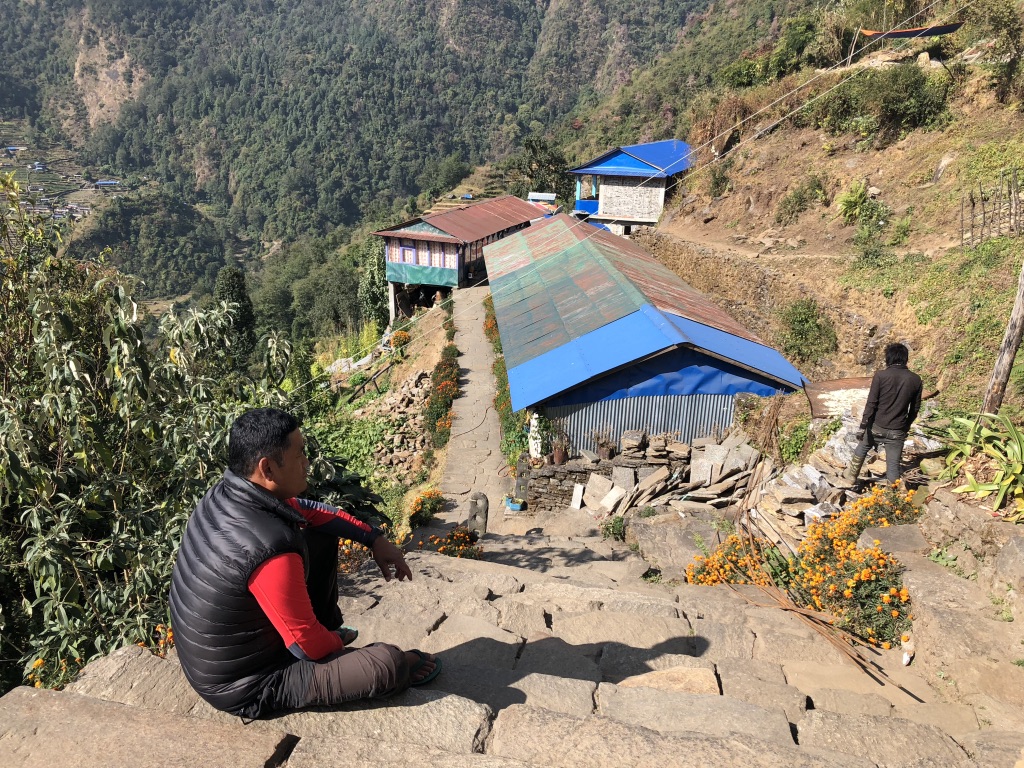
Day 2:
Still at low and lush elevation, I hiked up and down over foothills and river valleys through Jhinudanda to Chhomrong, through Sinuwa, then Bamboo, Dovan and finally stopping at Himalayan Hotel (not an actual hotel, just three lodges tucked together on a trail). Chhomrong is lovely settlement of lodges, cafes and places to buy supplies, scattered up and down a hillside that looks up the river valley to the mountains. Lots of steep stone pathways run through town, I took one of them a little further off trail than I meant to. I was sitting at small clearing looking at my map and eating snack when a teenager came through carrying a massive load of branches on her back and head. I offered her water, and she looked at pictures on my phone while we took a break in the shade. We didn't have any language in common, but it was easy to deduce that a white person is a trekker and asked me, "ABC?" Then we shared a chocolate bar and she led me back up the stone path to the right trail.
From Sinuwa on, the trail ascends steadily through one river valley heading both north and higher in altitude. Vegetation starts to change and the landscape feels less like a jungle forest, and more like a mountain climate. At Himalayan Hotel, I met an awesome group of solo travelers over dinner and got a bed in dorm room with 5 guys each from different countries. It felt like being at camp, all of us in our tiny beds laughing and telling stories as we fell asleep.
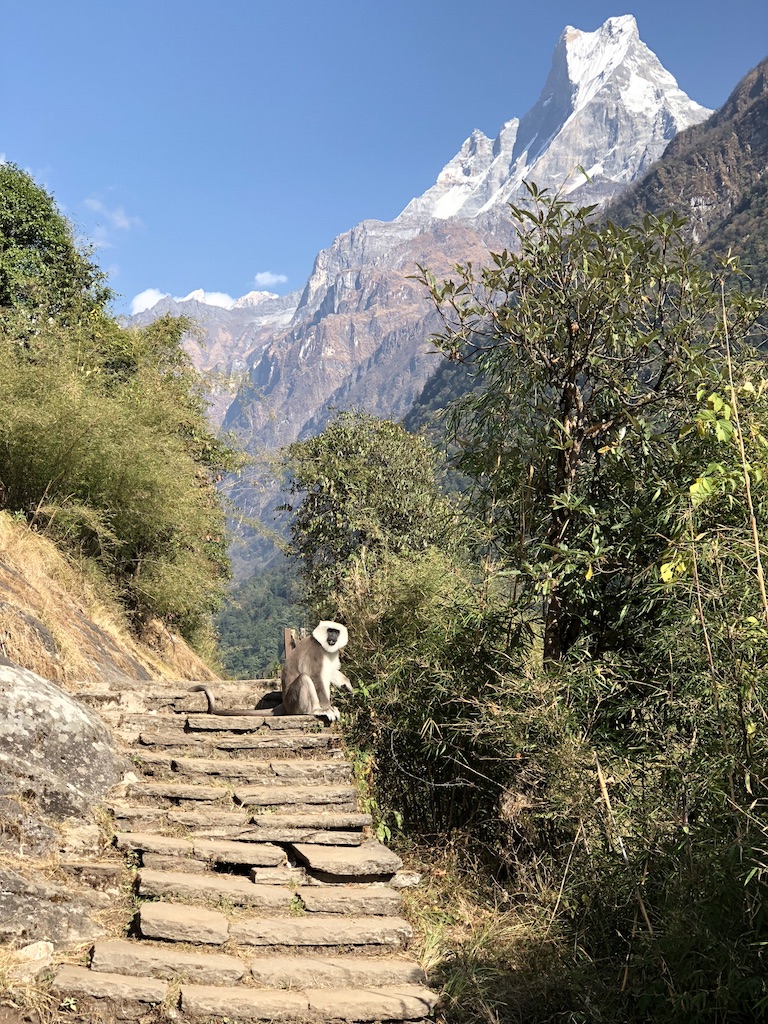
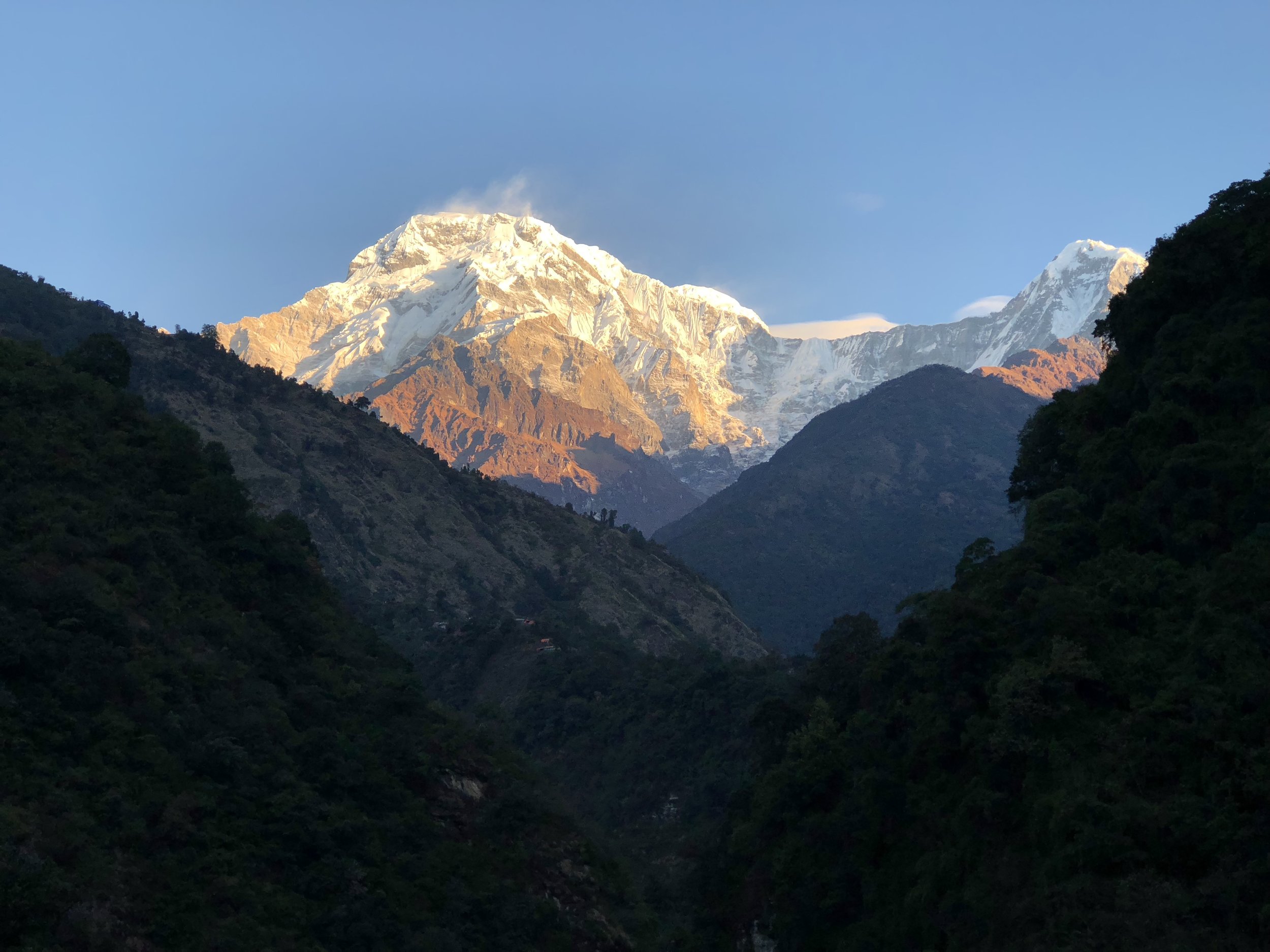
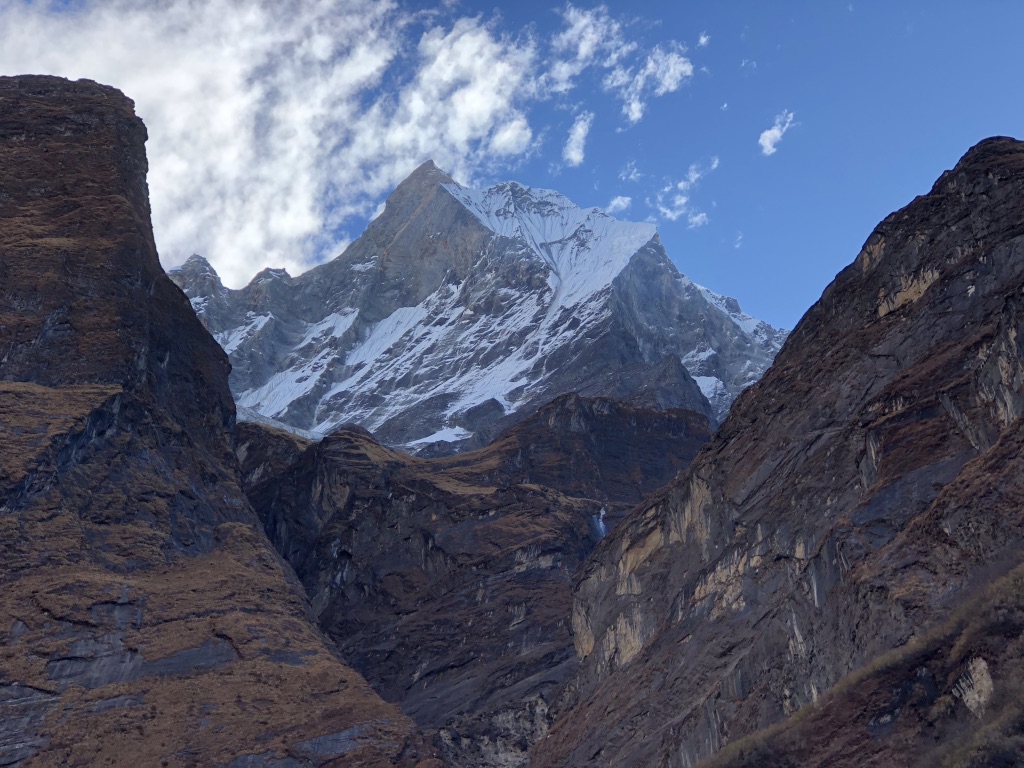
Day 3:
Ascent! I trekked through Deurali up to Machhapuchhre Base Camp (MBC), where I warmed up with soup and wardrobe adjustment and reunited with two of the people I'd met the night before. From MBC, the altitude started to impact my speed and breathing, all the trees had long since disappeared, and I walked up the last rocky beautiful valley with the mass of Annapurna I directly in sight. Base camp is a few lodges at the edge of massive receding glacier. Staring you in the face is the expansive steep wall of the Annapurnas, and all around you the prayer flags stretching among memorials to dead mountain climbers are snapping loudly in the wind.
After a bowl of warm lentils at base camp, I walked back down to MBC, back through Deurali and Himalayan Hotel, and stopped at Doban just at sunset and right before a rainstorm parked itself for the night. On my way to Deurali, I stumbled hard and came away with scrapes on my forehead and nose, giving me plenty of opportunity to wonder again why I was hurrying so much. At Dovan, all the lodges were full but an incredibly nice woman from the UK shared her room with me and I fell asleep with Neosporin on my nose, listening to rain pound the metal roof.




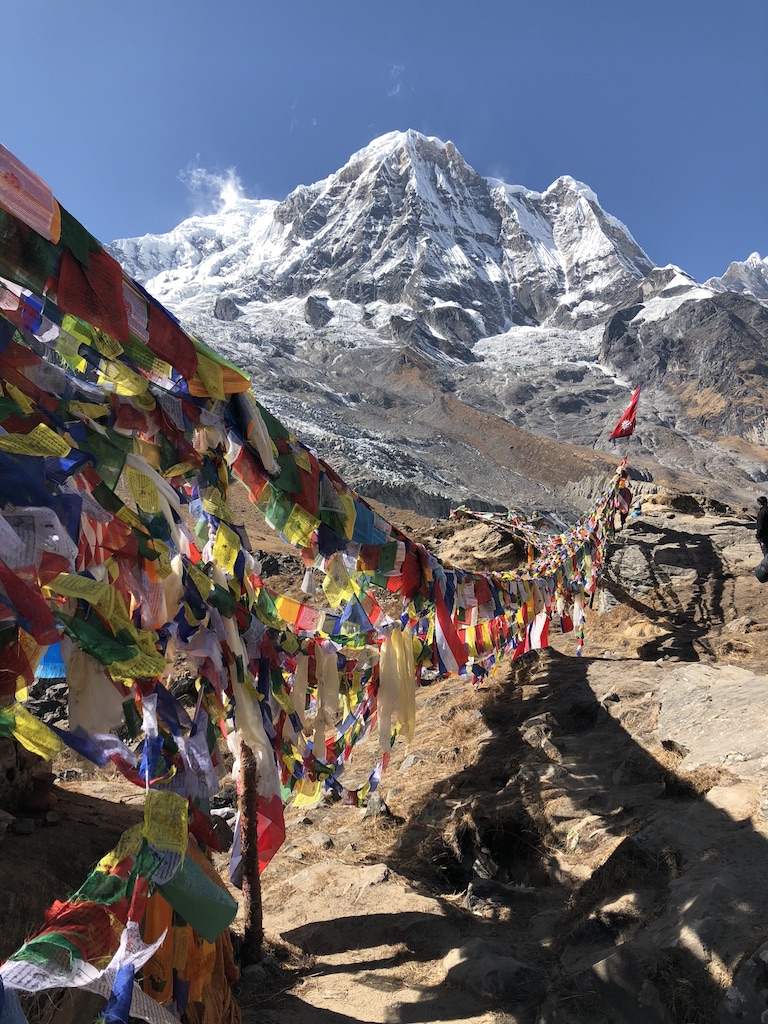
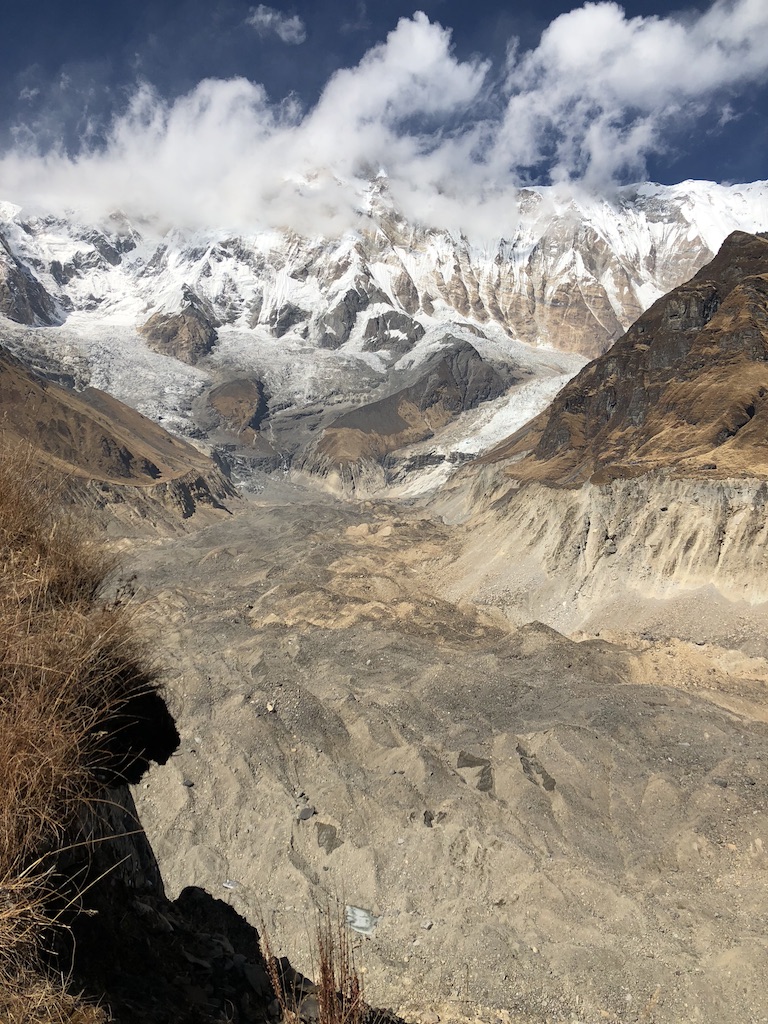
Day 4:
Thanksgiving Day. Over breakfast with a British woman, a Chinese man and two Nepalese men, i told them it was Thanksgiving in America and they enthusiastically launched into a discussion of Black Friday. Horrified, I tried to explain that's not what Thanksgiving is about but they were more interested in how stores coerce people into lining up on a holiday. "I wouldn't wait in line at midnight for anything," the British woman said. "Unless it was a kidney I needed, guess."
I cruised back through Bamboo, revisiting the spot where I had encountered a black-faced langur two days earlier, and hearing the monkey-like animals jumping and swinging through trees all around me. In Chhomrong, I stopped for a real cup of coffee and a real piece of pie at a really fake German bakery. I was back in the terrain of climbing up and down from one river valley into the next, headed through Jhinudanda, back to New Bridge. I had hiked into the region on the west side of the river, but at New Bridge I crossed over to the east side to walk southeast toward the town of Phedi and the road the Pokhara. The late afternoon took me through Landruk and Tolka, where I encountered a final, short wooden suspension bridge that was the worst-looking bridge I had encountered. I stared at it for awhile, contemplated the map, complained out loud, "Seriously?!" to absolutely no one, and then I just went for it. I felt relief stepping onto the stone at the far side. Thanksgiving dinner that night was dal bhat with a woman from Poland, and something approximating apple pie.
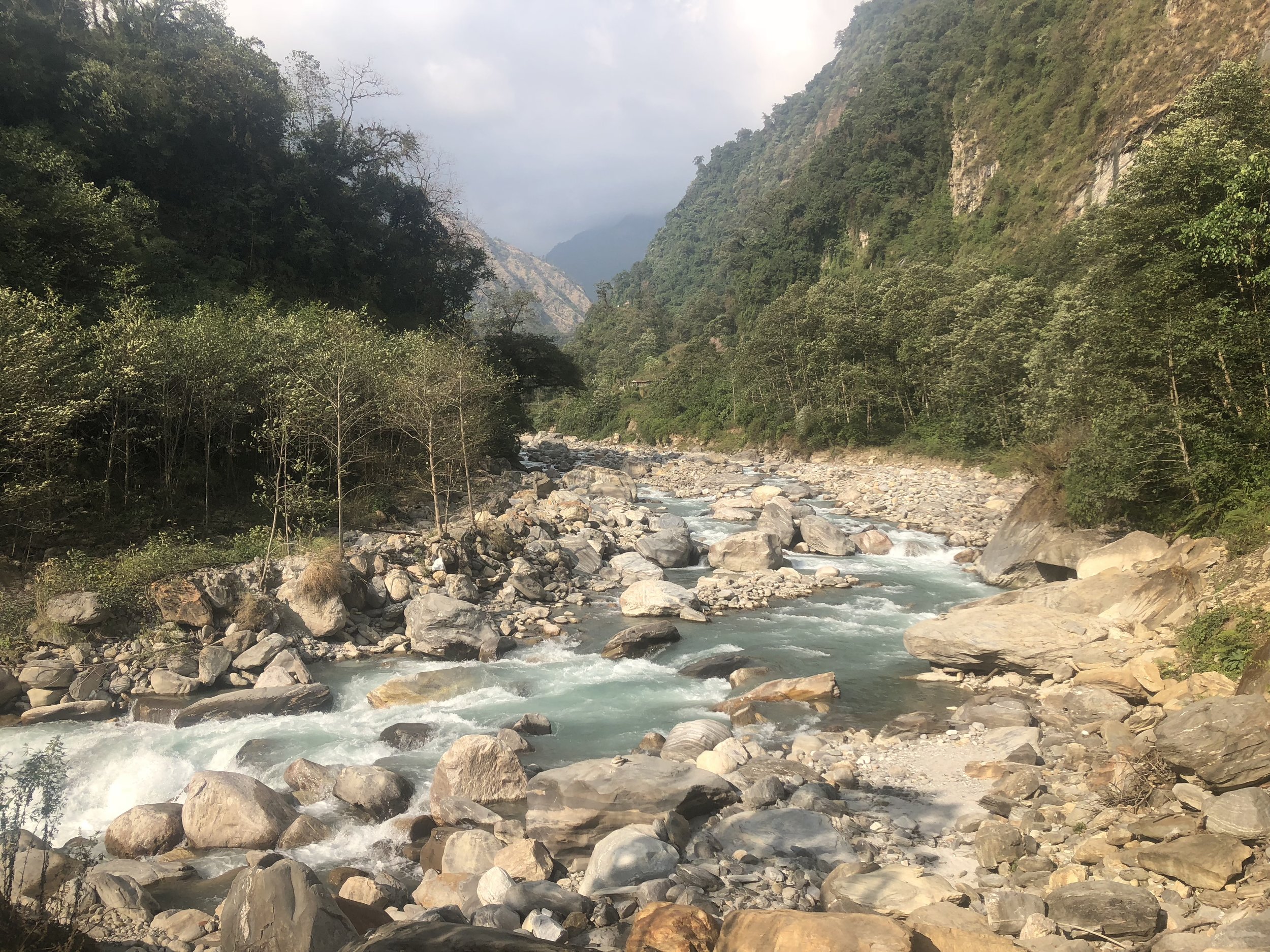
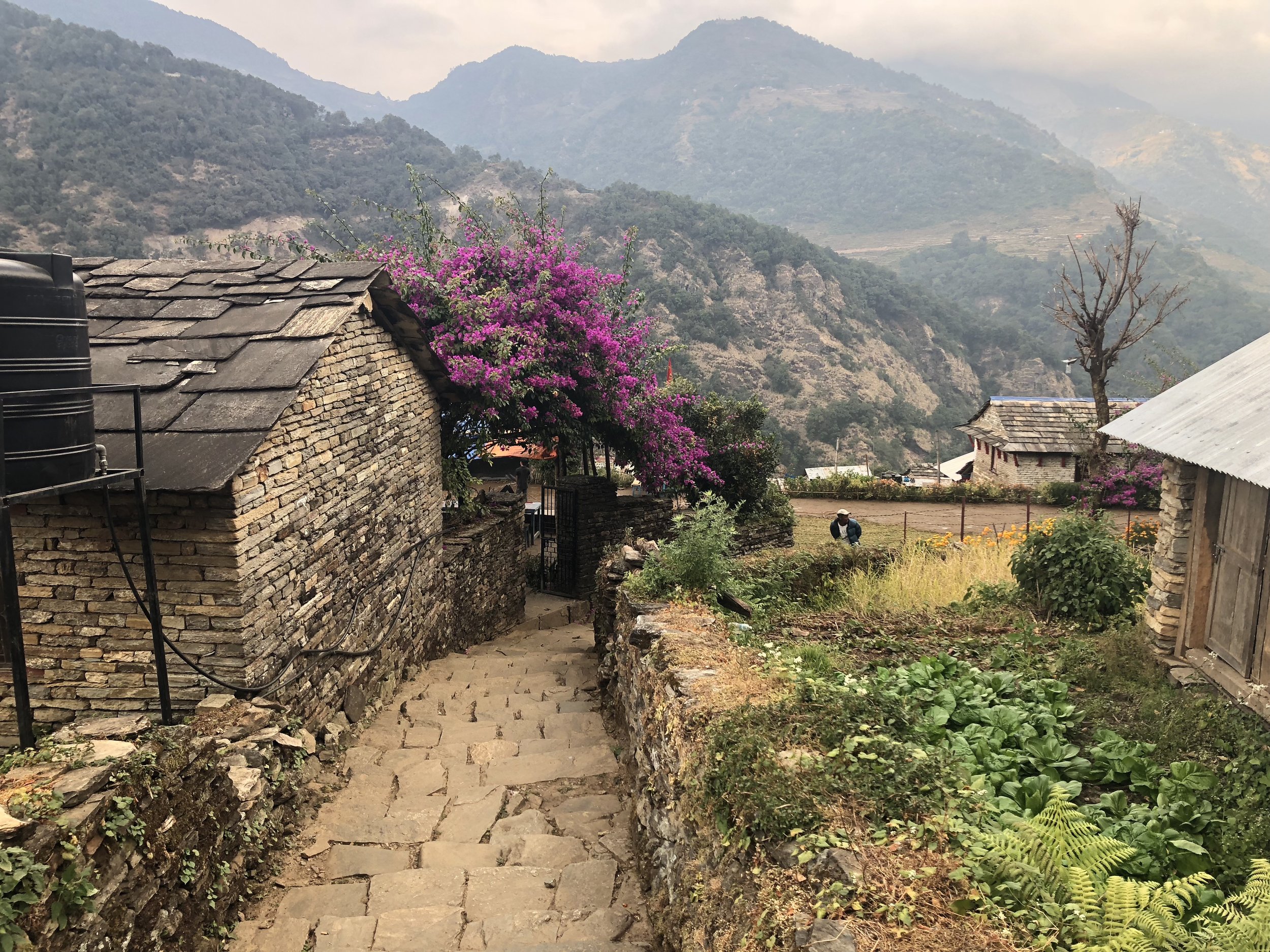
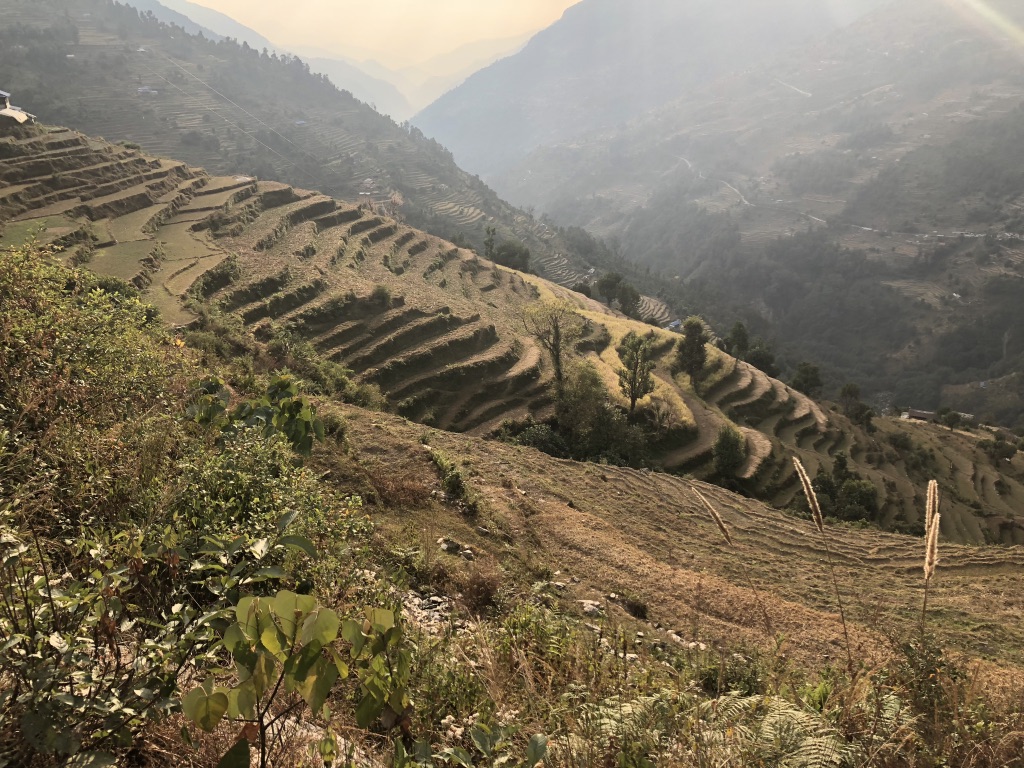
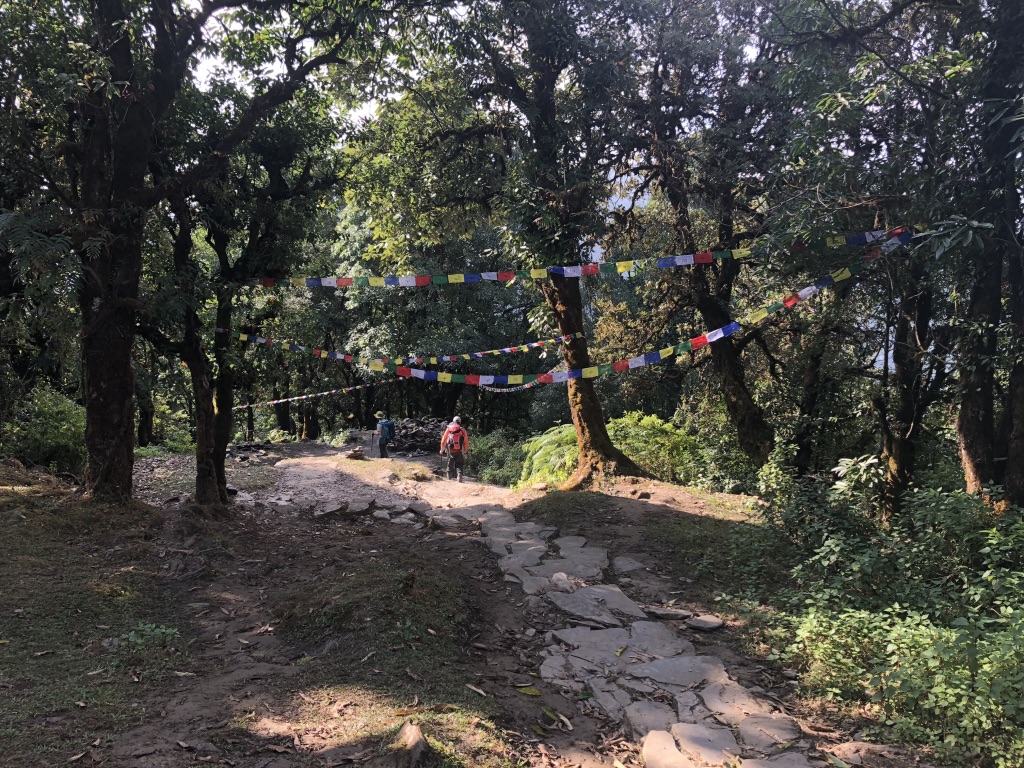
Day 5:
Just a few short hours up and over to Dhampus, and down into Phedi. As I walked, the jungly warm feeling of the lowlands was back in force, and way more people were on the trail. Trekkers who were just starting out from Phedi told us that the upcoming election had prompted a transportation strike and no buses were running between Phedi and Pokhara. Damn. I was little worried about this would shake out, but as soon as I reached the trailhead, there was a car parked with two big backpacks leaning against it. Moments later, two trekkers from Turkey and their driver walked up, and easily agreed to let me split the fare with them back to Pokhara.
Thanksgiving was a meaningful coincidence with my last night of trekking. Despite my hurry and impatience on this final trek, I was also full of appreciation for the people I had met on the trail, the bracing weather and scenery and the physicality of the effort.
[Annapurna Base Camp: November 20-24, 2017]
